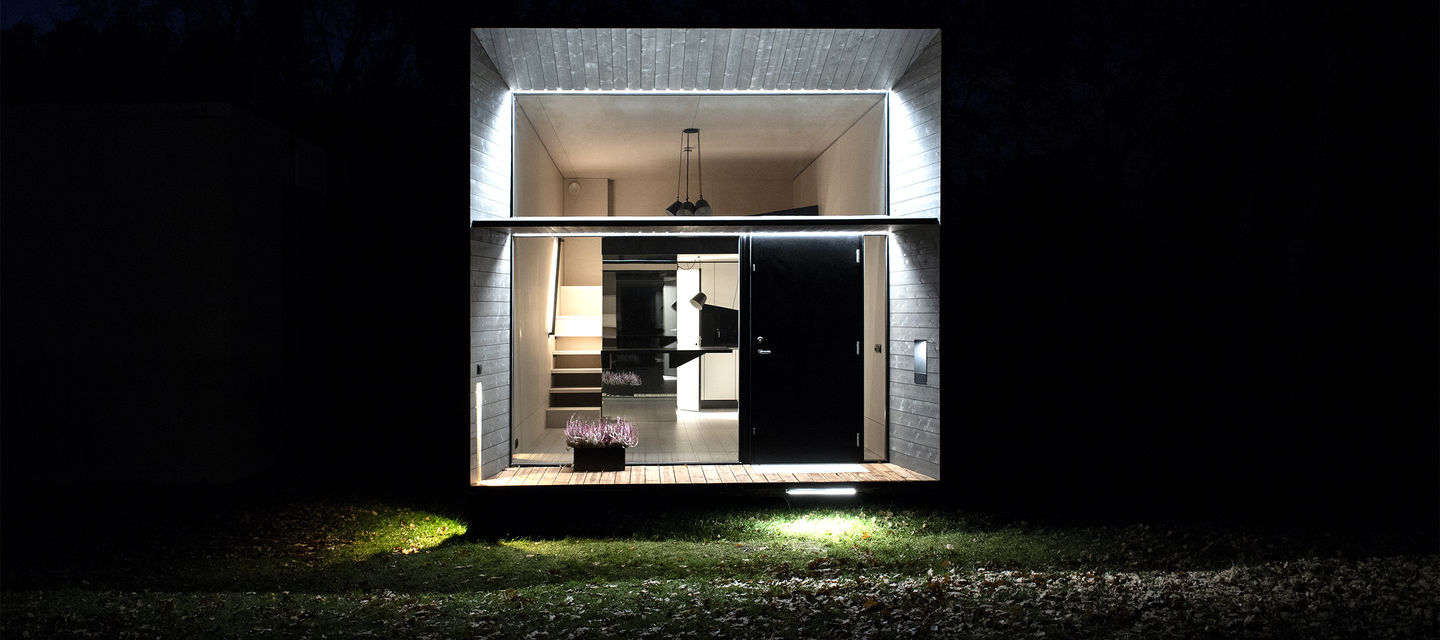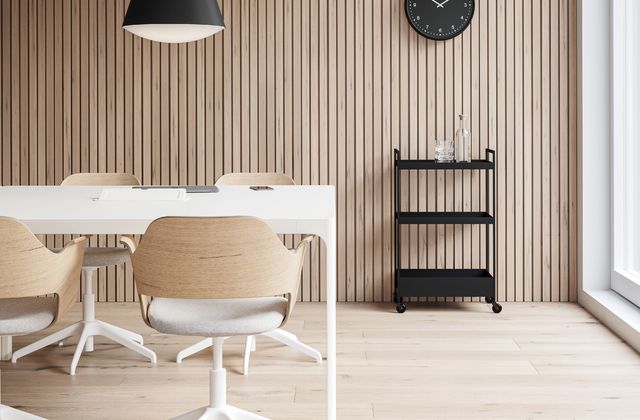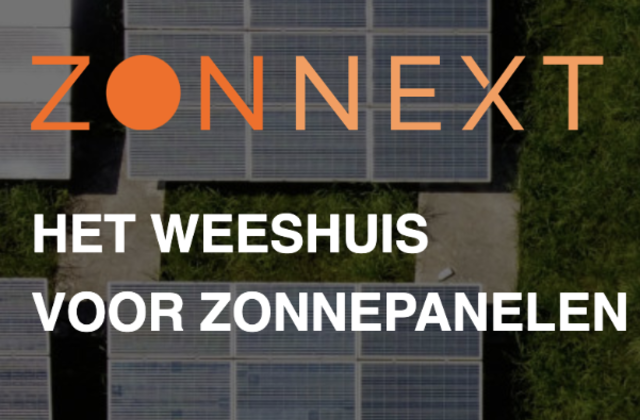Photo © KODA Loft at night, Getter Kuusmaa
What is it? The KODA house by Estonian company Kodasema is a modular housing solution designed to address housing needs through affordable, multifunctional housing. Produced off-site for less resource waste in construction, a unit will be delivered as a whole and can be occupied directly after being connected to utilities (Kodasema, 2021a, b). It is a small living unit, with the smallest, KODA Loft Micro, providing a complete living space on less than 20m2 (Kodasema, 2021c). Designed to offer all amenities of a modern residence, the KODA comes in eight different models and sizes and can be installed on solid ground or on pontoons to float on water (Kodasema, 2021d). It is designed to be multifunctional, so that it can be used as a home, office or commercial rental space, and the individual KODA blocks can be combined and stacked to create, for instance, a multifamily community, senior care, hospitality or retail. Those attributes make the KODA a movable housing asset that can be an attractive option for unused urban space or even flat rooftops, and moved and repurposed with little effort when needs change or when cities need redesign.
Why is this important? Until 2050, 2.5 billion people are estimated to move to urban areas (United Nations, 2018) but this large demand for housing is not yet met, with 1.6 billion people living in substandard housing in 2017 (United Nations, 2017). To meet this increasing demand, the urban built environment is expected to grow by 60% by 2050 (Circle Economy, 2019). In trying to meet the housing demand, the construction industry consumes 40% of global material resources (Khasreen et al., 2009), with 42 billion tonnes of material input needed to satisfy the housing needs in 2015 alone (Circle Economy, 2019). One of the major circularity strategies for the construction sector is to extend lifetimes and increase utilization (Material Economics, 2018). For instance, it is estimated that the average European office space is only used for 35-40% of the time (Ellen MacArthur Foundation, 2015); an issue that could be tackled by reconfiguring buildings to suit several uses. Finally, residential buildings account for 44% of total energy use and approx. one quarter of household greenhouse gas emissions (UNEP, 2019). With housing sizes growing in stark contrast to household sizes (larger spaces for fewer people), reducing the size of housing is a critical step to consider for a more sustainable building sector (Cohen, 2020).
Main resource strategy: Slowing the loop, through modularity, and reuse that allow housing to be used as an asset and enables housing-as-a-service.
Other resource strategies: Regenerating the loop through using natural timber frames or other innovative sustainable building technologies; Narrowing the loop through off-site production that enables low material wastage and through providing smaller spaces with low energy demands.
Business model aspects:
- Value Proposition: Kodasema offers a multifunctional housing solution that can be used as a movable asset to meet housing demands in whatever form needed (Kodasema, 2021b). The company offers eight different KODA models and sizes and the units can be combined and stacked to create larger housing communities (Kodasema, 2021a). The KODA can be used as a free-standing private residence but can also combined with others units and used to create retail or office spaces or provide housing needs for larger communities, such as senior care or hospitality, for both permanent and temporary developments (Kodasema, 2021e).
- Value Creation & Delivery: The KODA houses are produced off-site and delivered as a whole to the building site. Currently, KODA houses are available in 15 countries through 28 distributors and agents, with production sites in Estonia, the US and Canada (Kodasema, 2021a). In addition to the sale of housing, Kodasema also created the KODAStay hotel in Tallinn, and created the 21 unit-KODA Park in Tallinn which was sold to investors in 2021 (Kodasema, 2021a). While the KODA is available as both a concrete or timber frame version, the company has made the switch to mainly timber frame buildings, promoting the use of more sustainable materials (Kodasema, 2021b).
- Value Capture: Kodasema creates value through the architecture, design and production of KODA houses. Part of the production has been outsourced to the Harmet super factory to enable large-scale development with the advantage of mass production (Kodasema, 2020). Additional value is captured through the KODAStay hotel in Tallinn, now also operated by investors. The focus on necessities and removal of excessive design has been recognized as innovative through several awards, including the Prefab House of the Year 2020 Best Small Construction and the DNA Paris Design Award 2018.
Strategies for degrowth/ sufficiency (based on sufficiency strategies from Niessen & Bocken, 2021):
- Awareness-raising: Kodasema is active in raising awareness about the need to move towards sustainable consumption and production, among others by being a member of the One Planet Network (B. Linnamae, personal communication, 19 March, 2021).
- Design: In addition to enabling sufficiency through providing a low-impact housing alternative, the KODAs’ modularity also entails that the units can be repurposed and reused in different forms, meaning that their usage and lifetimes are extended.
- Green alternative: The KODA “addresses the global contrast between the growing population and the growth of the average Western living unit” (Kodasema, 2021e). It is a small living unit, with the smallest, KODA Loft Micro, providing a complete living space on less than 20m2 (Kodasema, 2021c). The KODA is meant to provide “minimum viable space for almost any function” (Kodasema, 2021f) and excessive features have been designed out to focus on the needs. As stated on the company website in a quote by founder Hannes Tamjärv: “The original idea at the early stages of Kodasema was to stop wasting energy and start reducing the energy consumption also in the construction industry. Small living spaces often automatically mean less energy is required leaving a smaller footprint” (Kodasema, 2021f). Sustainability is part of the Kodasema principles and the company enables smaller living based on the recognition that “by living smaller and consuming fewer things, the footprint one leaves on the environment is already tinier” (Kodasema, 2021f).
Business model experimentation practices: Founded in 2014, Kodasema initially built and designed concrete KODA houses. The Kodasema product sales business model was extended with the opening of the KODAStay hotel by the company in 2017. In 2018, the current CEO Birgit Linnamae joined and the company pivoted away from concrete materials to timber frames and from production to architecture, design and engineering (Kodasema, 2021b). In 2017, the first KODA Park was set up in Tallinn. It was owned by Kodasema until 2021 when it was sold to a group of investors, proving the business case of the KODA Park as a movable urban community (Kodasema, 2021b). Having pivoted and adjusted its business model to respond to technology and production developments, as well as market and demographic housing needs, the company also sees a future opportunity in society shifting towards housing-as-a-service where units such as the KODA are multifunctional mobile assets that can be deployed where needed (B. Linnamae, personal communication, 19 March, 2021).
Sustainability outcomes: While no specific sustainability outcomes have been reported for Kodasema, the potential sustainability benefits of timber buildings are significant, with light timber-construction housing estimated to consume half the amount of energy of a concrete or metal frame house (Adalberth, 2000), and a potential of 37% energy use reductions in building a timber-frame apartment block rather than concrete (Tettey et al., 2019). Furthermore, timber frame buildings can be up to three times more affordable than other building types (Hossaini et al., 2015).
Sources:
Adalberth, K. (2000). Energy Use and Environmental Impact of New Residential Buildings. Byggnadsfysik LTH,
Lunds Tekniska Högskola.
Circle Economy (2019). Circularity Gap Report 2019. Accessed 28th March 2019 at https://www.legacy.circularity-gap.world/
Cohen, M. (2020). New Conceptions of Sufficient Home Size in High- Income Countries: Are We Approaching a Sustainable Consumption Transition?, Housing, Theory and Society, DOI: 10.1080/14036096.2020.1722218
Ellen MacArthur Foundation (2015). Growth Within: A Circular Economy Vision for a Competitive Europe. Accessed 29 March 2021 at: https://www.ellenmacarthurfoundation.org/assets/downloads/publications/EllenMacArthurFoundation_Growth-Within_July15.pdf
Hossaini, N., Reza, B., Akhtar, S., Sadiq, R., & Hewage, K. (2015). Ahp based life cycle sustainability assessment (lcsa) framework: a case study of six storey wood frame and concrete frame buildings in vancouver. Journal of Environmental Planning and Management, 58(7), 1217–1241. https://doi.org/10.1080/09640568.2014.920704
Khasreen, M.M., Banfill, P.F.G., & Menzies, G.F. (2009). Life-Cycle Assessment and the Environmental Impact of Buildings: A Review. Sustainability. 1(3), p. 674-701. DOI: https://doi.org/10.3390/su1030674
Kodasema (21 October 2020). Harmet and Kodasema to serve jointly large developments in Europe. Accessed 29th March 2021 at https://www.kodasema.com/press/harmet-and-kodasema-to-serve-jointly-large-developments-in-europe/
Kodasema (2020). KODA by Kodasema – Our Core Principles.
Kodasema (2021a). Kodasema presentation Global 2021.
Kodasema (2021b). KODA - movable housing solutions | quick, easy & flexible | sustainable | stackable. Company 1-pager.
Kodasema (2021c). KODA LOFT MICRO. Accessed 29 March 2021 at https://www.kodasema.com/koda-loft-micro/
Kodasema (2021d). KODA Float. Accessed 29 March 2021 at https://www.kodasema.com/koda-loft-float/
Kodasema (2021e). KODA. Accessed 29 March 2021 at https://www.kodasema.com/
Kodasema (2021f). About Us. Accessed 29 March 21 at https://www.kodasema.com/about-us/
Linnamae, B. (19 March 2021). Personal communication [Interview].
Material Economics (2018). The Circular Economy – A Powerful Force for Climate Mitigation. Accessed 29 March 2021 at https://www.sitra.fi/en/publications/circular-economy-powerful-force-climate-mitigation/
Tettey, U. Y. A., Dodoo, A., & Gustavsson, L. (2019). Effect of different frame materials on the primary energy use of a multi storey residential building in a life cycle perspective. Energy & Buildings, 185, 259–271. https://doi.org/10.1016/j.enbuild.2018.12.017
United Nations (2 October 2017). Affordable housing key for development and social equality, UN says on World Habitat Day. Accessed 29 March 2021 at https://news.un.org/en/story/2017/10/567552-affordable-housing-key-development-and-social-equality-un-says-world-habitat
United Nations (16 May 2018). 68% of the world population projected to live in urban areas by 2050, says UN. Accessed 29 March 2021 at: https://www.un.org/development/desa/en/news/population/2018-revision-of-world-urbanization-prospects.html
United Nations Environment Program (UNEP) (2019). Emissions Gap Report 2019. Paris: UNEP.
***
About project Circular X
Project Circular X is about ‘Experimentation with Circular Service Business Models’. It is an ambitious research project funded by the European Research Council (ERC) which supports top researchers from anywhere in the world. Project CIRCULAR X runs from 2020-2025. The project is led by Principal Investigator (PI) Prof Dr Nancy Bocken, who is joined by a multidisciplinary team of researchers at Maastricht Sustainability Institute (MSI), Maastricht School of Business and Economics, Maastricht University. The project cooperates with businesses who want to innovate towards the circular economy.
Project Circular X addresses a new and urgent issue: experimentation with circular service business models (CSBMs). Examples of such new business models include companies shifting from selling products to selling services and introducing lifelong warrantees to extend product lifetimes. However, CSBMs are far from mainstream and research focused on experimentation is little understood. The research aims to conduct interdisciplinary research with 4 objectives:
- Advancing understanding of CSBMs; their emergence and impacts
- Advancing knowledge on CSBM experimentation
- Developing CSBM experimentation tools
- Designing and deploying CSBM experimentation labs
Funding source
This project has received funding from the European Research Council (ERC) under the European Union’s Horizon 2020 research and innovation programme, grant agreement No. 850159.
Using this information
When you cite this publication, please use the following source:
Circular X. (2021) Case study: KODA - Multifunctional, movable housing solution. Accessed from www.circularx.eu



